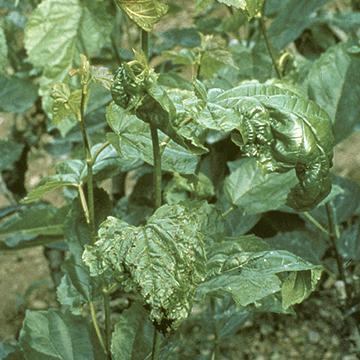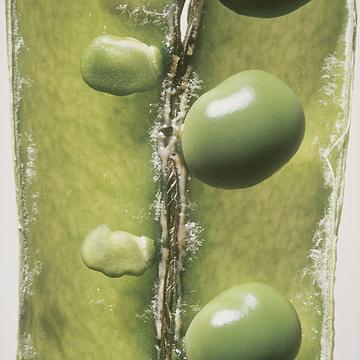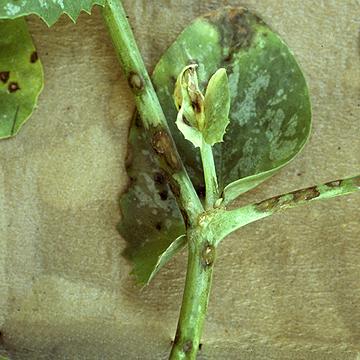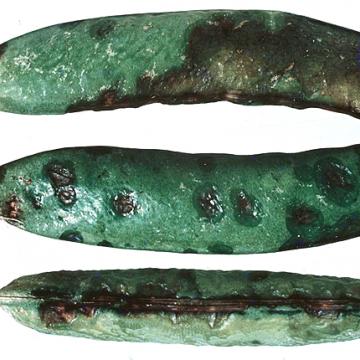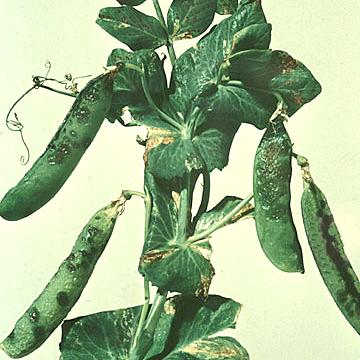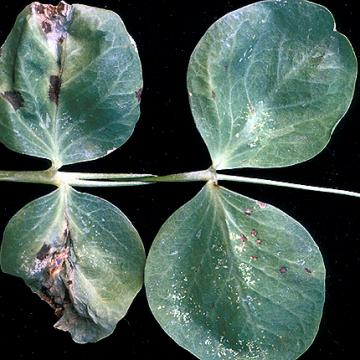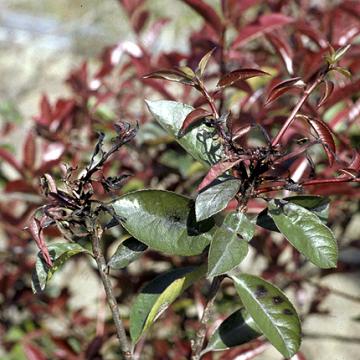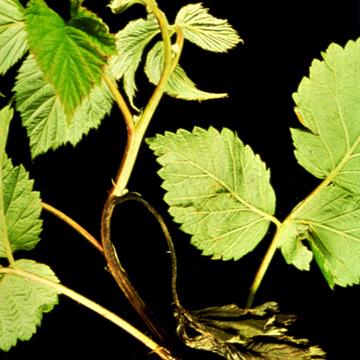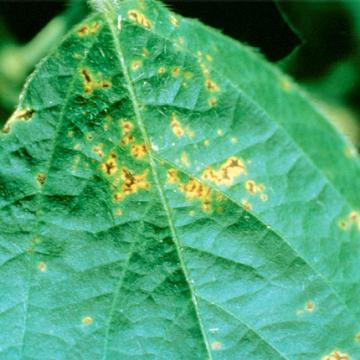Search term:
Pseudomonas syringae pv. Syringae
DISEASE: Bacterial blight
HOST: Mulberry
Blighted foliage with yellowing and curling of leaves.
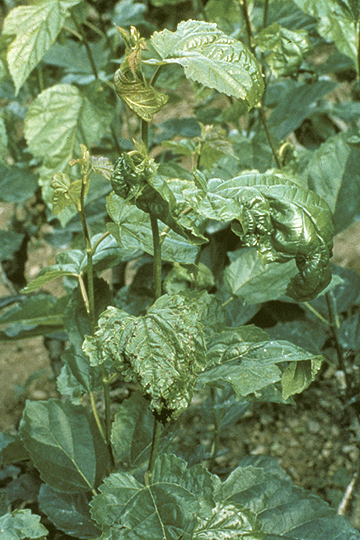
Bacterial blight | Mulberry
DISEASE: Bacterial blight
HOST: Mulberry (Morus sp.)
PATHOGEN: Pseudomonas syringae pv. mori
SOURCE: M. Sato, M. Goto
DISEASE: Bacterial blight
HOST: Pea
Pea pod with diseased seeds and infection along the suture.
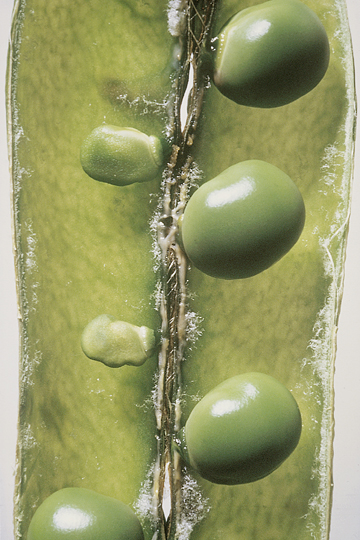
Bacterial blight | Pea
DISEASE: Bacterial blight
HOST: Pea (Pisum sativum)
PATHOGEN: Pseudomonas syringae pv. pisi
SOURCE: J. M. Kraft
DISEASE: Bacterial blight
HOST: Pea
Pea plant with water-soaked lesions on stems and leaves with some bacterial exudate evident. Irregular lesions turn dark brown with light tan centers. Severe distortion of stems, petioles, and growing points may occur.
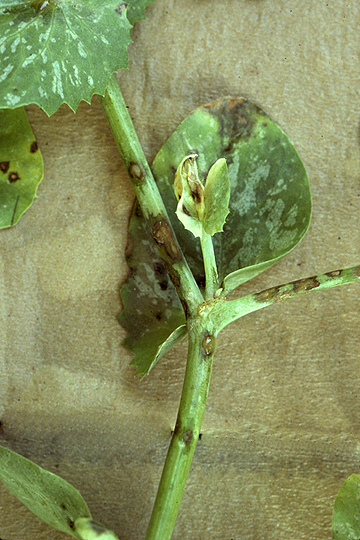
Bacterial blight | Pea
DISEASE: Bacterial blight
HOST: Pea (Pisum sativum)
PATHOGEN: Pseudomonas syringae pv. pisi
SOURCE: S. Thomson
DISEASE: Bacterial blight
HOST: Pea
Dark lesions on pods and dorsal sutures.
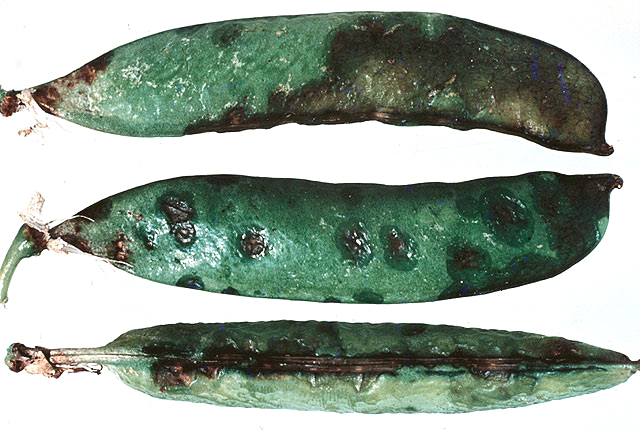
Bacterial blight | Pea
DISEASE: Bacterial blight
HOST: Pea (Pisum sativum)
PATHOGEN: Pseudomonas syringae pv. pisi
SOURCE: J. Young
DISEASE: Bacterial blight
HOST: Pea
Severely diseased plant with array of blight symptoms.
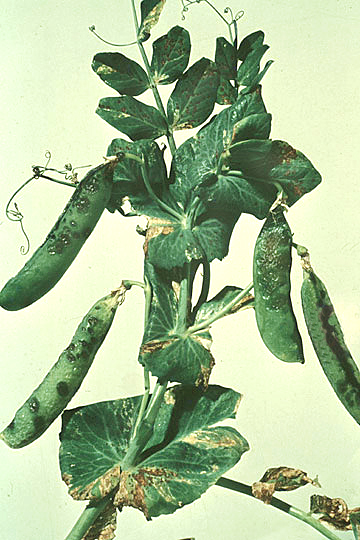
Bacterial blight | Pea
DISEASE: Bacterial blight
HOST: Pea (Pisum sativum)
PATHOGEN: Pseudomonas syringae pv. pisi
SOURCE: J. Young
DISEASE: Bacterial blight
HOST: Pea
Leaves with typical blight symptoms. The disease also affects nodes, stipules, floral parts, stems, and pods.
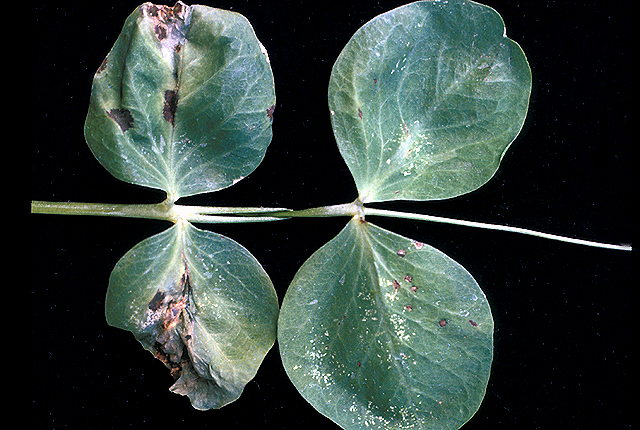
Bacterial blight | Pea
DISEASE: Bacterial blight
HOST: Pea (Pisum sativum)
PATHOGEN: Pseudomonas syringae pv. pisi
SOURCE: M. Schroth
DISEASE: Bacterial blight
HOST: Photinia
Symptoms of photinia bud blight shown here are similar to those of blast of pear and apple, caused by Pseudomonas syringae pv. syringae.
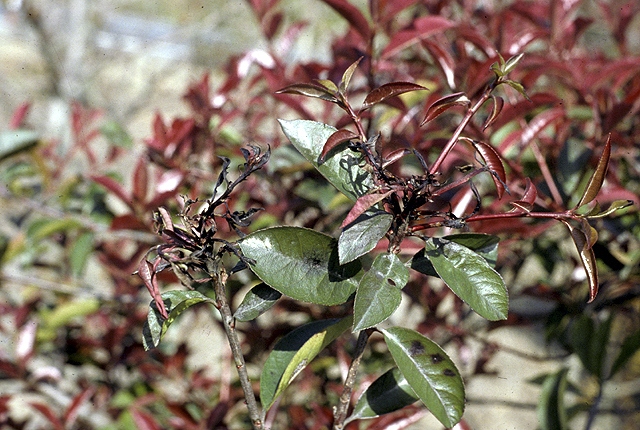
Bacterial blight | Photinia
DISEASE: Bacterial blight
HOST: Photinia (Photinia glabra)
PATHOGEN: Pseudomonas syringae pv. photiniae
SOURCE: M. Goto
DISEASE: Bacterial blight
HOST: Raspberry
Systemically invaded stem and dead leaf.
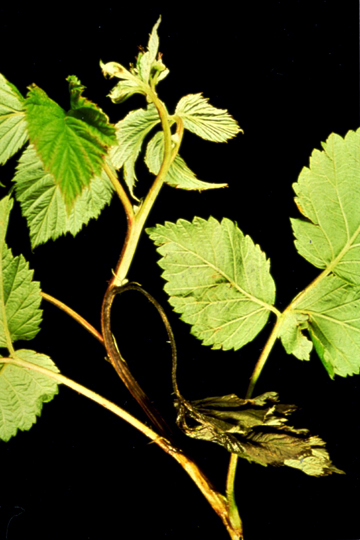
Bacterial blight | Raspberry
DISEASE: Bacterial blight
HOST: Raspberry (Rubus sp.)
PATHOGEN: Pseudomonas syringae pv. syringae
SOURCE: R. Byther, M. Shurtleff
DISEASE: Bacterial blight
HOST: Soybean
Leaves with yellowish brown necrotic lesions. Lesions also may be yellow to light brown and bordered by yellowish green halos. Lesions occur on stems, petioles, and pods.
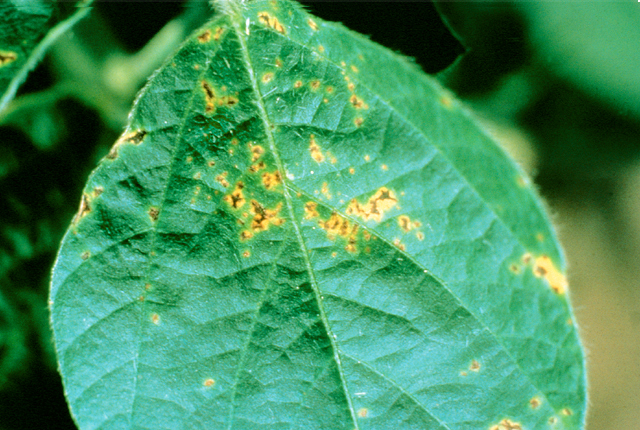
Bacterial blight | Soybean
DISEASE: Bacterial blight
HOST: Soybean (Glycine max)
PATHOGEN: Pseudomonas syringae pv. glycinea
SOURCE: J. B. Sinclair


